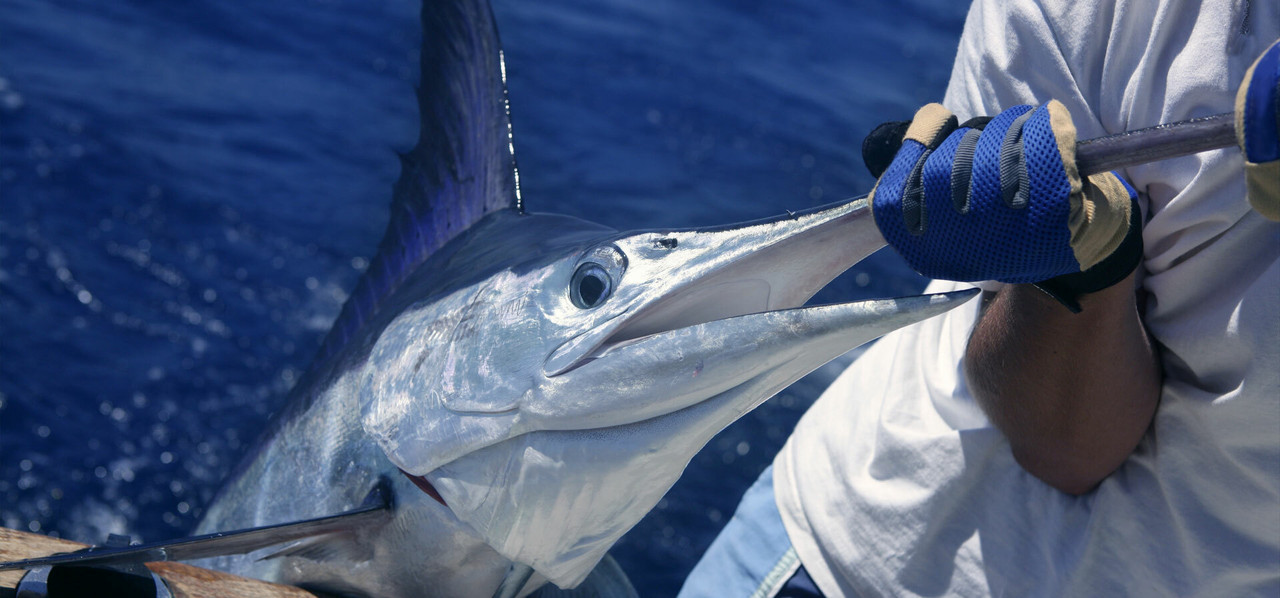A Tackle Shop Guide to Game Fishing Hooks
Choosing the right hook for game fishing is a critical decision that directly impacts your success. It's not just about size; it's about matching the hook's design, strength, and point style to your specific technique, whether you're trolling skirted lures, rigging skip baits, or live baiting. This guide will break down the key considerations from a tackle shop perspective.
A Note From Our Local Experts
"While I don't personally spend my weekends chasing marlin, my two decades of experience in the tackle trade has been a deep education in what works. When a charter captain or a serious game angler comes into the shop to stock up for the season, the conversation is always about reliability. They're not looking for a bargain; they're looking for peace of mind.
They talk about the importance of a hook's point holding up after hours of trolling and the necessity of a hook that goes well with their heavy leader. They are investing in a piece of game fishing equipment that represents the absolute final link to a potential fish of a lifetime or a tournament win, and they will not compromise on quality. That's the standard we hold our game hook range for sale to."
- Ben Czulowski, Owner, Fishing Tackle Shop
The Great Debate: J-Hooks vs. Circle Hooks
The choice between these two styles is fundamental to modern game fishing.
- J-Hooks: The traditional choice, especially for trolling skirted lures where an aggressive strike from the fish is expected. A J-hook requires a deliberate, hard strike from the angler to set the hook, but provides an incredibly strong connection when it finds its mark.
- Circle Hooks: The modern standard for bait fishing, and mandatory in many tournaments. A circle hook is designed to set itself in the corner of the fish's jaw as the line comes tight. This results in a much higher hook-up rate and is far better for the fish's welfare, making it the top choice for catch-and-release.
Rigging Skirted Lures: A Guide to Hook Rigs
The hook rig inside your lure is the engine room of your setup. The two most common rigs are:
✔
Single Hook Rig: This is a simple, strong, and highly effective setup. A single, heavy-duty stainless steel J-hook is rigged on a heavy leader, positioned so it sits just at the end of the lure's skirt.
✔
Shackle Rigs: A more advanced setup where the hook (or hooks) are connected to the leader via a stainless steel shackle. This allows the hooks to swing more freely within the skirt, which many anglers believe provides a more natural action and a better hook-up rate.
Pro-Tips for Game Hooks
- Match Hook Size to Your Lure/Bait: The hook should be proportional to your offering. A common rule of thumb for skirted lures is that the gape of the hook should be approximately the same width as the lure's head.
- Point Protection: When trolling, a small rubber band or a piece of dental floss can be looped over the hook point and barb. This helps prevent the hook from snagging on the leader or the lure skirt itself.
Frequently Asked Questions
Why do I need a specific 'game fishing' hook?
Standard hooks are not designed to handle the immense, sustained pressure of a large pelagic fish. Game fishing hooks are made from high-carbon steel or stainless steel and are forged for incredible strength, preventing them from straightening or breaking during a long fight. Features like strong eyes and corrosion-resistant finishes are also essential.
What's the difference between using a J-hook and a circle hook for game fishing?
A J-hook requires an active strike from the angler to set the hook and is the traditional choice for lure trolling. A circle hook is designed to self-set in the corner of the fish's jaw as the line comes tight, making it the superior choice for bait fishing and for catch-and-release, as it rarely gut-hooks a fish.
What game fishing hooks do I need for my skirted lures?
You need a heavy-duty, stainless steel J-hook with a straight or slightly curved-in point. These are typically rigged in a single or twin-hook formation on a heavy monofilament or fluorocarbon leader. A more advanced option is a shackle rig, which allows the hooks to swing more freely inside the lure skirt.
How do I correctly match my hook size to my bait and line class?
This is a critical balance. The hook needs to be large enough to be effective but not so large that it kills the action of your bait. A good starting point is to match the hook gape to the size of the bait (e.g., a 10-inch slimy mackerel is well-matched to an 8/0 or 9/0 hook). The hook's strength should also match your line class—there's no point using a light-gauge hook on 37kg tackle.
How do I properly sharpen a heavy-gauge game fishing hook?
The best tool is a hook file. Lay the file flat against one side of the hook point and draw it towards the barb a few times. Repeat for the other two sides to create three sharp, flat edges that meet at a perfect point. Always finish by lightly filing the point itself to remove any burrs. A sharp hook should "bite" into your thumbnail with very little pressure.



